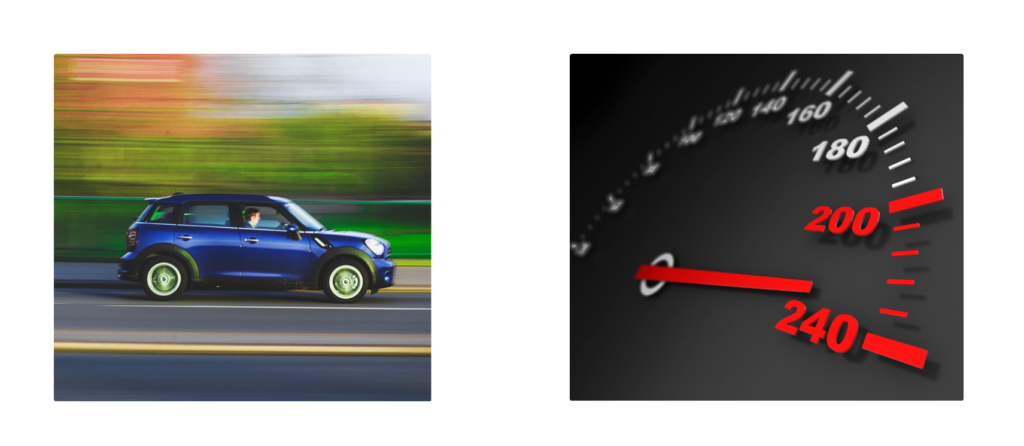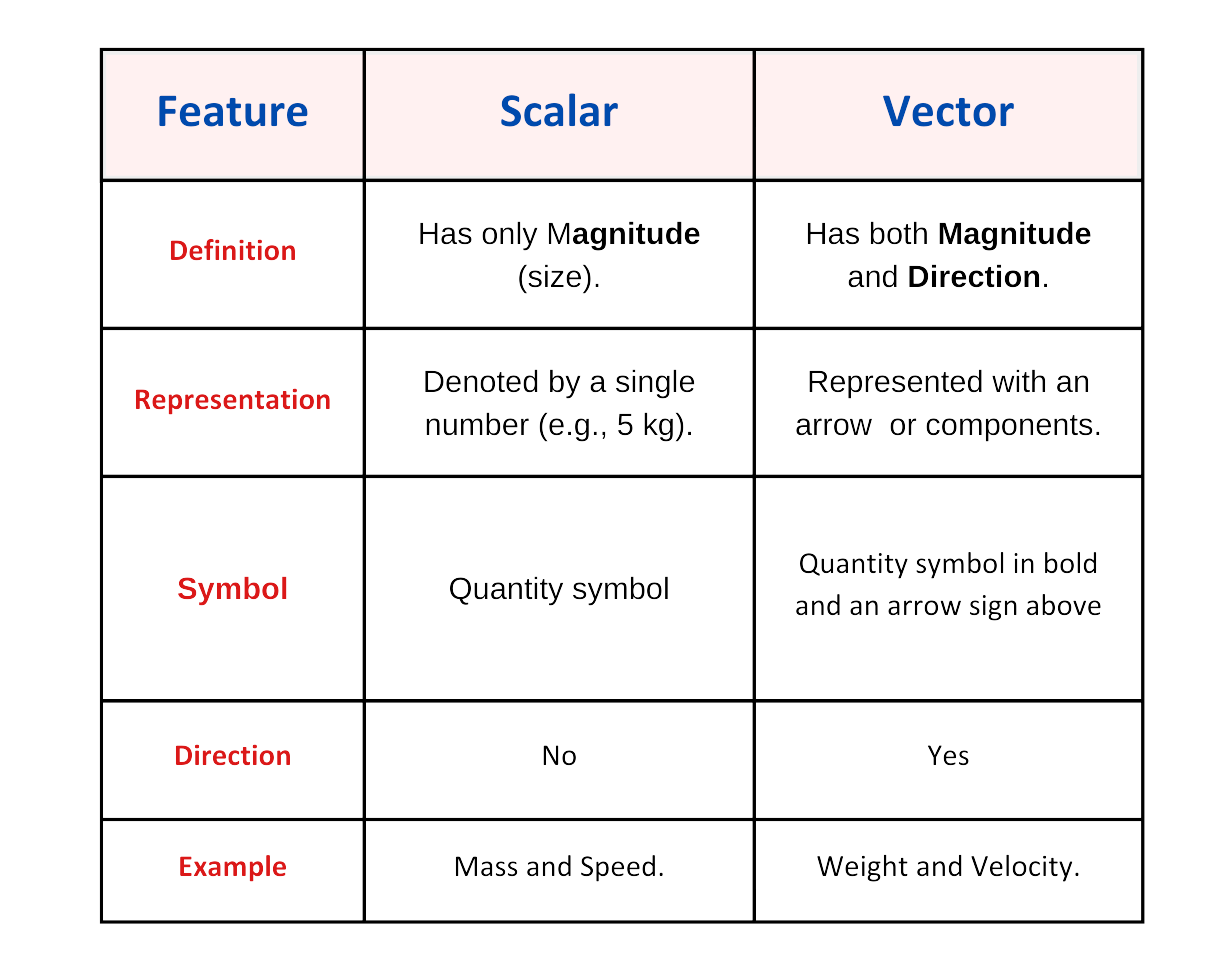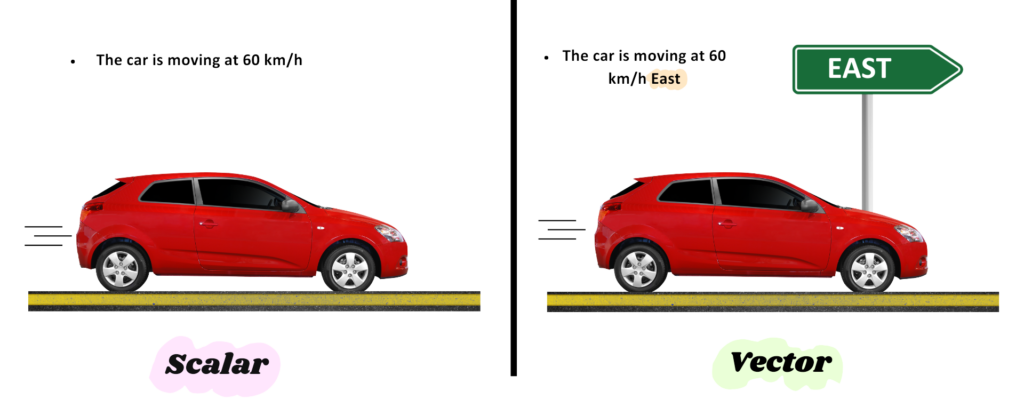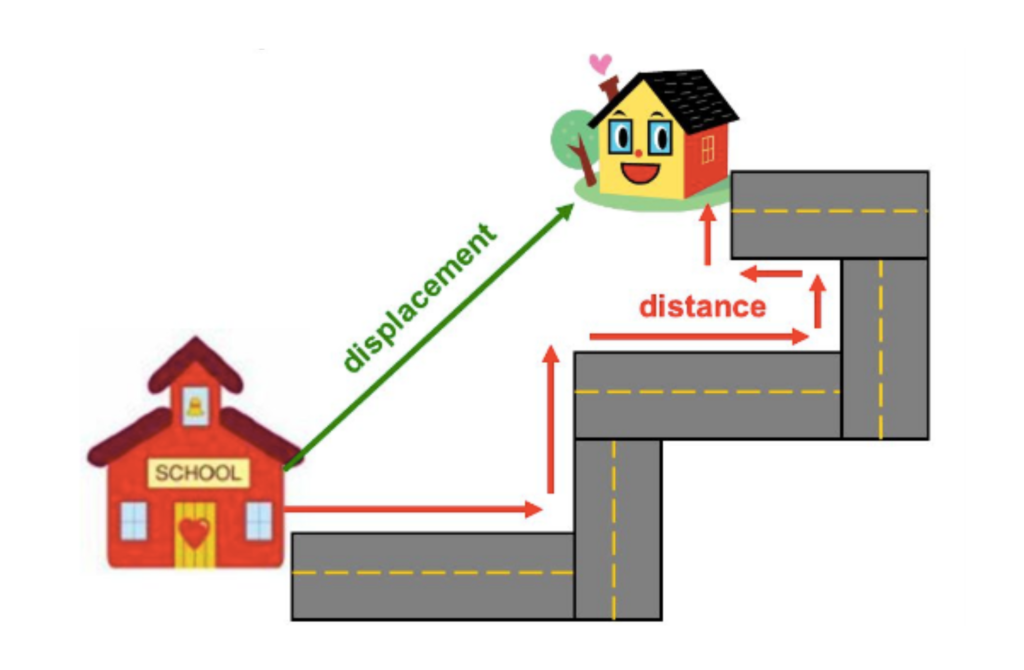Vectors and Scalars – GCSE Physics
Introduction
- Motion is defined as the change in the position of an object with respect to time.
- Scalar and Vector Quantities are used to describe the motion of an object.
- Scalars are quantities defined by magnitude alone, such as Speed or Temperature, while Vectors are characterized by both Magnitude and Direction, like Velocity and Force.
Scalar Quantities in Real Life:
- Speed in Transportation
- Temperature in Weather Forecasting
- Energy Consumption
Vector Quantities in Real Life:
- Force in Engineering
- Navigation and Aviation
- Sports and Physics
What are Scalar Quantities
- A scalar quantity is a physical measurement that has only Magnitude (size or amount) and no Direction.
- They can be described completely by a single number with a unit.
Examples:
- Mass: It is Scalar Quantity that measure the amount of matter in an object

- Distance: The total length of the path traveled by an object, regardless of its direction.

- Speed: How fast an object moves.

- Temperature: Measures the average kinetic energy of particles in a substance.

What are Vector Quantities
- A vector quantity is a physical measurement that has both Magnitude and Direction.
- They can be described by a single number with a unit and Direction.
Examples:
- Force: It is a Vector Quantity that describes a push or pull acting on an object

- Weight: It is the force exerted on an object due to gravity.

- Velocity: It is the rate of change of an object’s displacement

- Momentum: It is a vector quantity that describes the quantity of motion of an object.

Scalars vs Vectors: What’s the Difference


Real-World Examples
Weather:
- Scalar: Temperature (“It’s 39°C outside”) – only Magnitude
- Vector: Wind (“20 km/h from the Northwest”) – needs both Speed and Direction

Shopping:
- Scalar: Grocery bill (“£45.60”) – just an amount
- Vector: Walking in a store (“Move 10 meters to aisle 3, then turn right”) – requires Direction

Construction:
- Scalar: Amount of concrete (“50 cubic meters”) – quantity alone
- Vector: Crane operation (“Lift 200 kg upward while moving east at 1 m/s”) – Direction essential

Common Misunderstandings
Speed ≠ Velocity:
- Speed is scalar (e.g. 20 m/s)
- Velocity is vector (e.g. 20 m/s North).

Distance ≠ Displacement:
- Distance = Total journey
- Displacement = Straight-line from start to finish.

Frequently Asked Questions
Solution:
Mass is a scalar quantity. It tells us how much matter is in an object, but it does not have a direction.
Solution:
Energy is a scalar. Like mass, it only has Magnitude and no Direction.
Solution:
Power is a scalar quantity. It measures how quickly energy is transferred or used, without any direction.
Solution:
Time is a scalar. It moves forward, but in physics, we measure it without direction.
Solution:
Speed is a scalar. It shows how fast something is moving. If you include direction, it becomes velocity, which is a vector.

